Best plants for living fences – 7 varieties to green up a bare boundary no matter the size or style of your yard
From flowering shrubs and woody perennials to trees and grasses, discover which plants will most suit your yard's perimeter
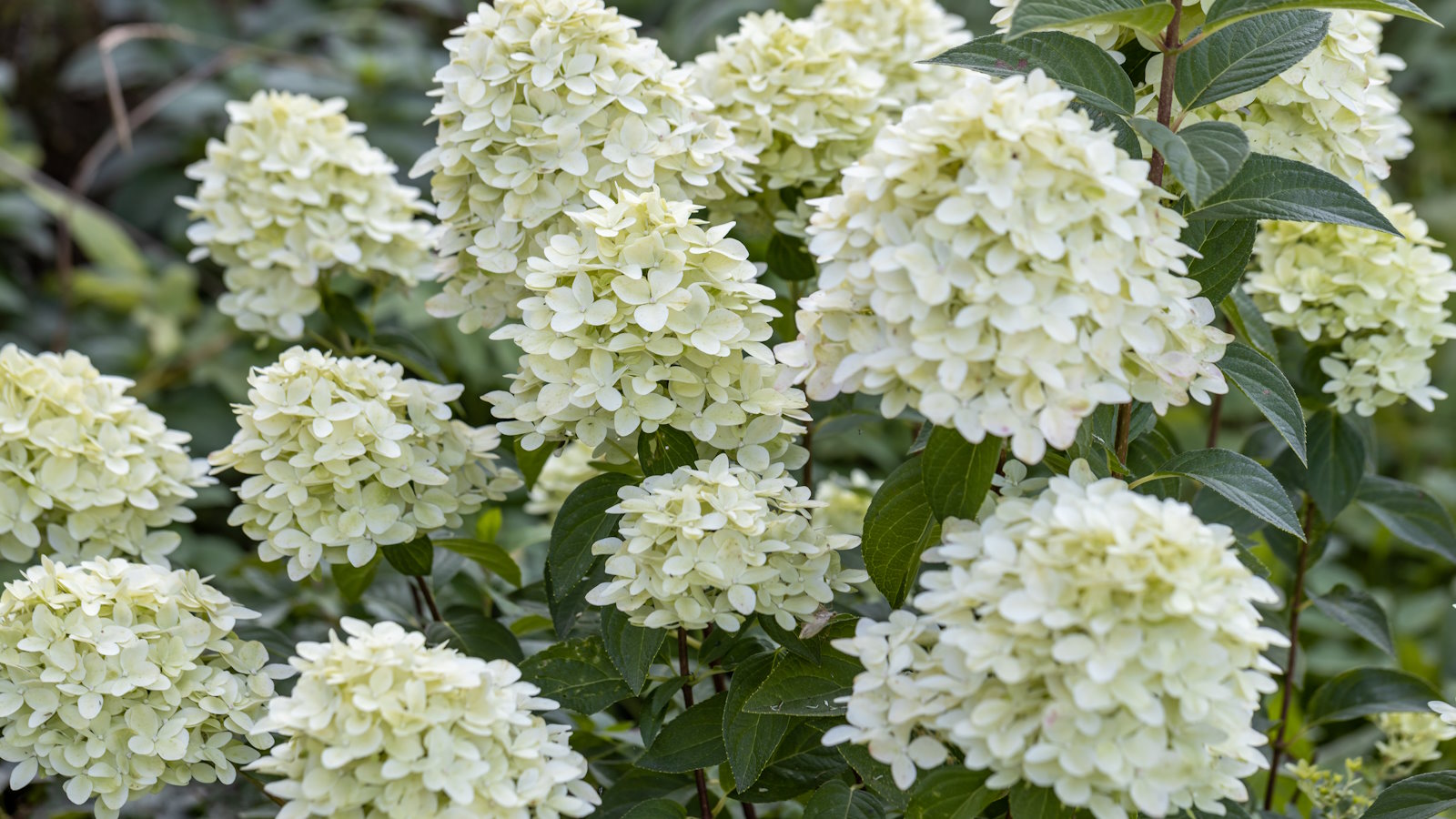
- 1. Limelight Hydrangea (Hydrangea paniculata ‘Limelight’)
- 2. Miscanthus Morning Light (Miscanthus sinesis ‘Morning Light)
- 3. Arrowwood Viburnum (Viburnum dentatum)
- 4. Virginia Rose (Rosa virginiana)
- 5. English laurel (Prunus Laurocerasus)
- 6. Podocarpus (Podocarpus macrophyllus)
- 7. European Hornbeam (Carpinus betulus)
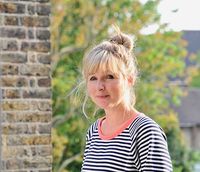
A living fence is a wonderful, natural way to mark the perimeter around your property. As well as looking lovely, the best plants for a living fence absorb CO2, cool the atmosphere and provide a home for birds and wildlife. Here you can peruse the options, which each offer different looks, styles and benefits.
There are plenty of wonderful living fence ideas, from flowering and fruiting shrubs to fast-growing evergreens, so the final decision will rest on a number of factors, pertinent to you and your space.
We've asked landscape gardeners and horticulturalists their favorite plants for living fences, to offer up some options you may not have considered and to help narrow down the choices. Armed with this information, it will be easier to make a decision that's best for you and your yard.
7 of the best plants for living fences
Firstly, think about the aesthetics. Would you like your living fence to have summer blooms, winter berries or to be an elegant leafy evergreen screen? Would you like it to have some practical benefits, for example, additional security with thorns or needles? How tall would you like it to grow? Then consider any maintenance, such as how often will the plant require pruning and whether it will need supplemental watering in your region.
Ideally, a living fence will look attractive and provide privacy. Yet, with a little thought, it can do so much more. Ecological landscape designer, Kim Eierman loves to include more than one plant species in a living fence to boost biodiversity.
'Traditionally, living fences, hedgerows, and planted privacy screenings have been monoculture plantings,' says Kim Eierman, founder EcoBeneficial and author, The Pollinator Victory Garden.
'We need to take a new approach to improve the ecological health of our managed landscapes; planting diversely with appropriate regional native plants. This approach increases biodiversity; a critical tool for stemming species loss and enhancing ecological functioning.'
Design expertise in your inbox – from inspiring decorating ideas and beautiful celebrity homes to practical gardening advice and shopping round-ups.
1. Limelight Hydrangea (Hydrangea paniculata ‘Limelight’)
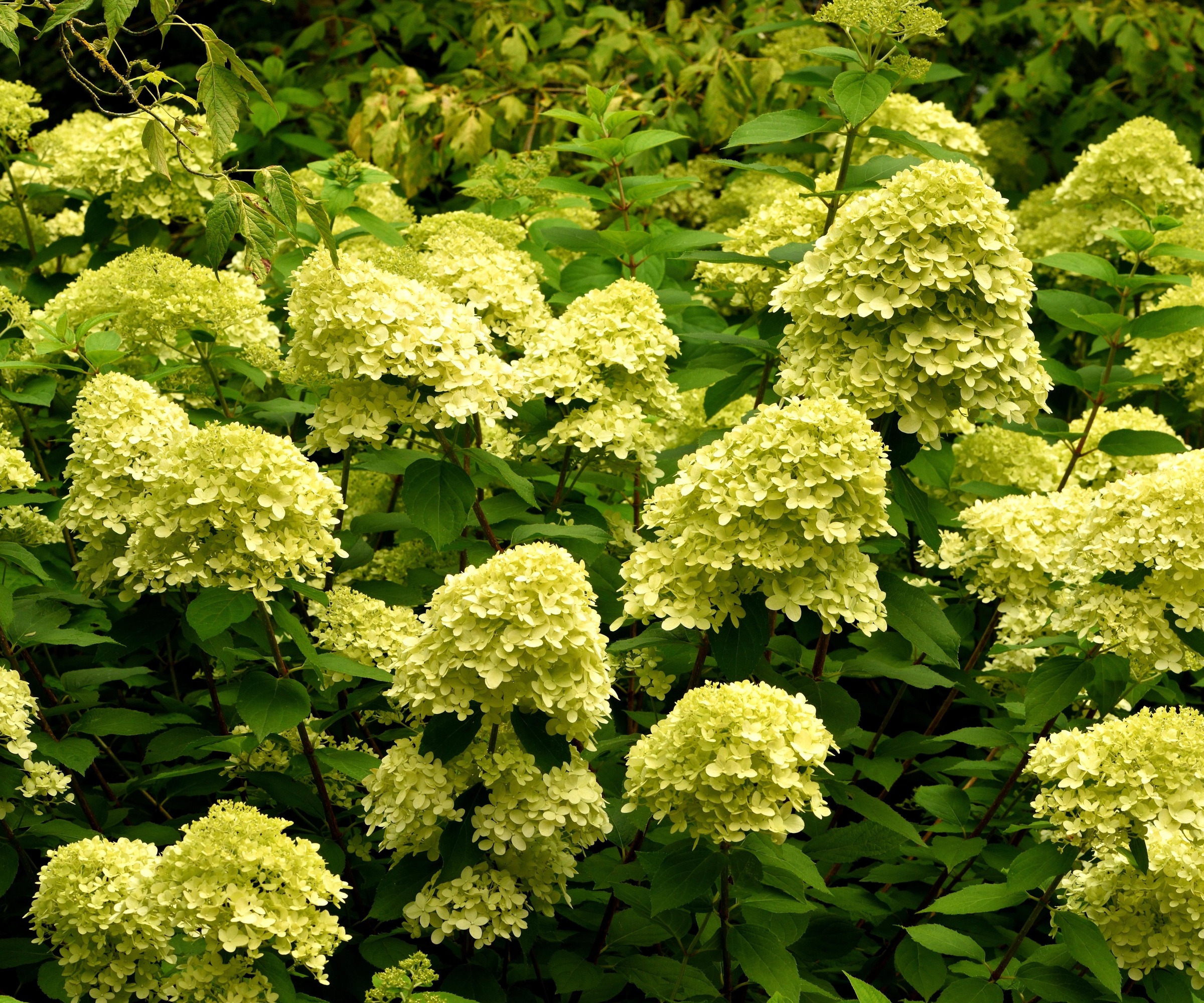
Although popular for flower bed ideas, hydrangeas are great for living fences around property borders too. With their height and huge blooms, these plants create privacy and look beautiful around the garden perimeter.
'Tall hydrangeas make great living fences because they are breathtaking in the summer but also have fall and winter interest,' says Caitlin Boyle, founder, Dirt Diva Designs. 'I also like Limelights and other “panicle’ hydrangeas because they are very hardy, if not downright rugged. I have 7’ foot Limelights that I moved from a different house and hard-pruned last year and they look perfectly happy.'
Limelight hydrangeas start blooming in mid to late summer, coming in – no surprise – lime green. In the fall the large conical flowers turn pink and ruby tones.
The flowers eventually turn brown but I leave those spent blooms up all winter because they look beautiful in the snow. Limelights are hardy from zones 3-8 and prefer full-sun to part-shade.
'What really makes this a great living fence is the height and the three-season interest. Although, in winter, there is still enough woody structure that it feels like a definition of space even if there are no leaves.'
USDA hardiness zones: 3-8
2. Miscanthus Morning Light (Miscanthus sinesis ‘Morning Light)
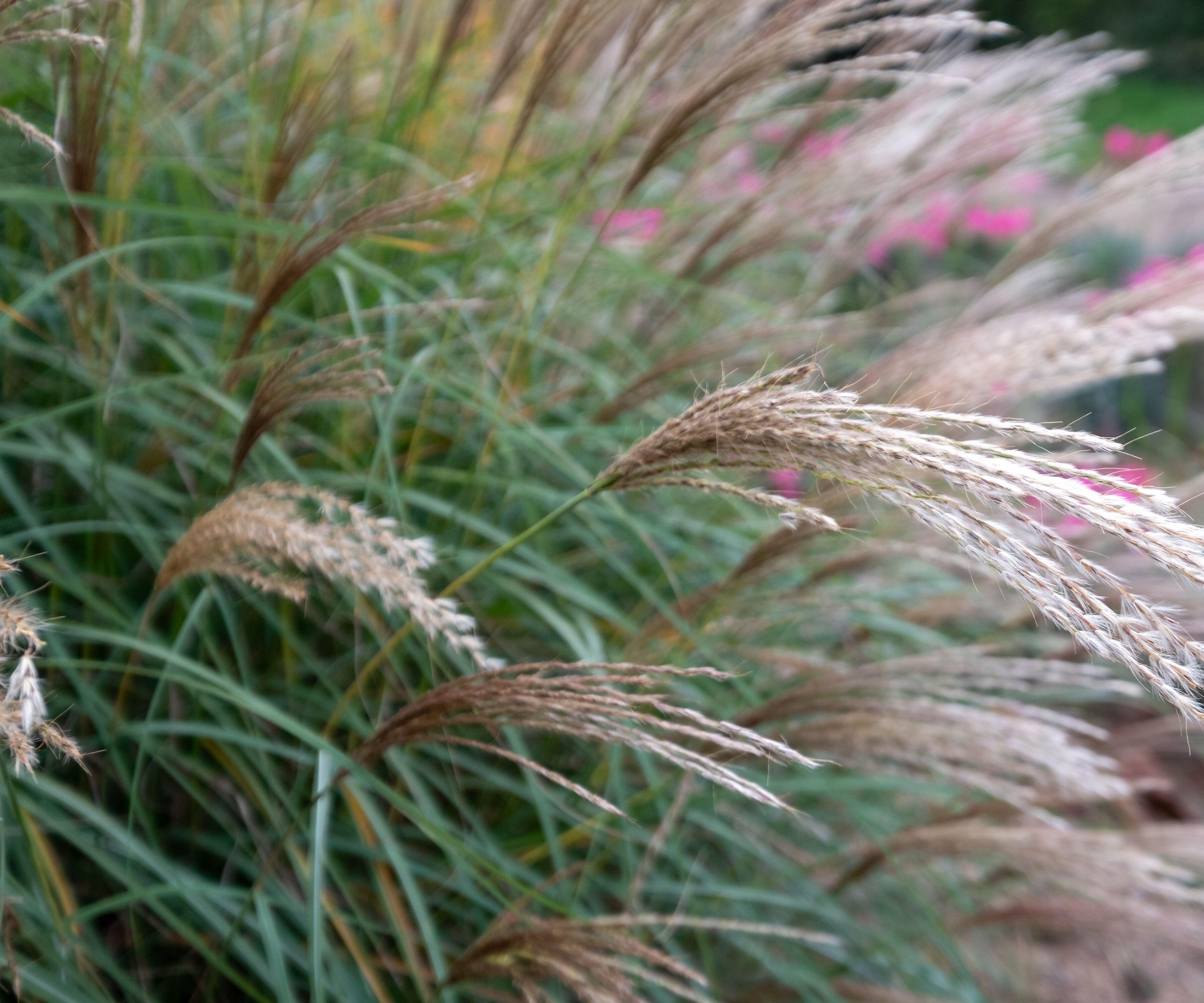
For something non-traditional and a little more modern, ornamental grasses are a wonderful alternative to clipped hedges, flowering shrubs, climbers or evergreens. Yet tall grasses can still provide privacy and a natural fence line around your property.
With the wide variety of grasses available, there is something to suit most zones. However, Miscanthus 'Morning Light' is one of Caitlin's favorites for a living fence in the northeast.
'Large grasses are the most affordable way to make a living fence, and one of the most attractive,' says Caitlin. 'I love the sense of enclosure and privacy that that a hedge or fence brings, and Miscanthus 'Morning Light' brings the size - 5-6’ tall and 4’ wide – while also staying airy.
'There are other Miscanthus varieties that are taller, they grow up to 10’ tall. But I think Morning Light’s size makes it more manageable. I love its rounded form and variegated leaves which glow when backlit (hence the name). To make a boundary, I lay them out in a staggered grouping for the most natural feel.
'They look very coastal and instantly, like the beach, make me feel calm. Provide them with full sun to part shade and they won't disappoint.'
USDA hardiness zones: 5-9
3. Arrowwood Viburnum (Viburnum dentatum)
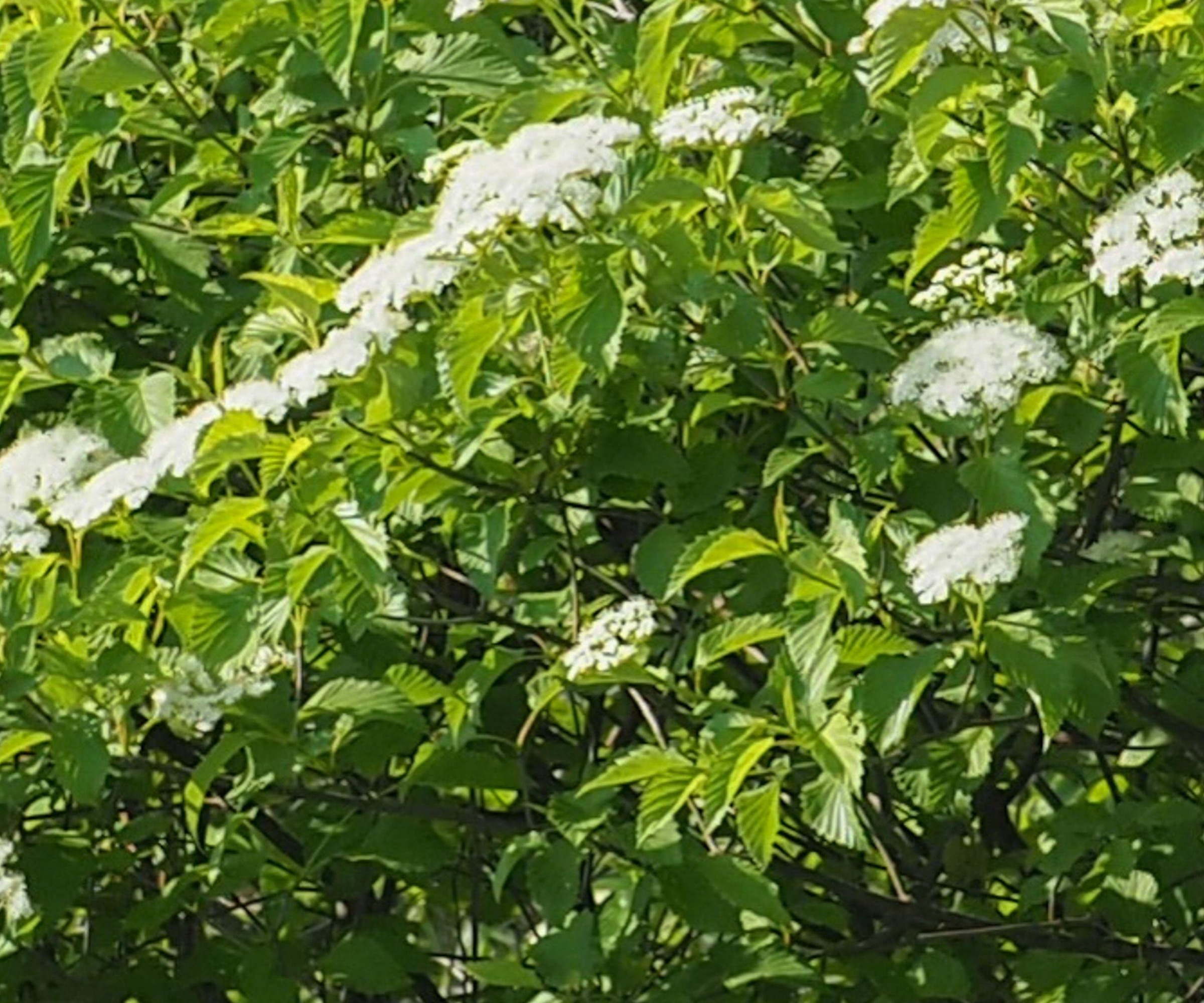
Native to the Eastern US and Canada, Arrowwood Viburnum is a reliable flowering shrub that's winter-hardy across zones 2-8, so it makes a good choice for a living fence. Expect white flowers to appear in late spring followed by black berries.
This plant can tolerate a range of soils but prefers moist loams and requires little maintenance once established.
'Arrowwood Viburnum is an ecological powerhouse,' says Kim. 'Its flowers provide nectar and pollen to numerous pollinators, it’s a larval host plant, and it produces highly nutritious fruit in the late summer for migrating birds. As with other native viburnums, plant two or more genetically different plants of the same species for cross-pollination and fruiting.
'Depending on the site conditions, good companion plants for Viburnum dentatum could include Aronia melanocarpa (Black Chokeberry) and Physocarpus opulifolius (Common Ninebark).
'Arrowwood Viburnum thrives in full sun to part shade in consistently moist soil. While cultivars of this plant vary in size, the straight species plant often grows to 8 to 10 feet tall and wide and needs no pruning.'
USDA hardiness zones: 2-8
This Arrowwood Viburnum from Nature Hills is suitable for zones 3-8, will grow up to 8-10' tall and wide, and requires pruning after flowering.
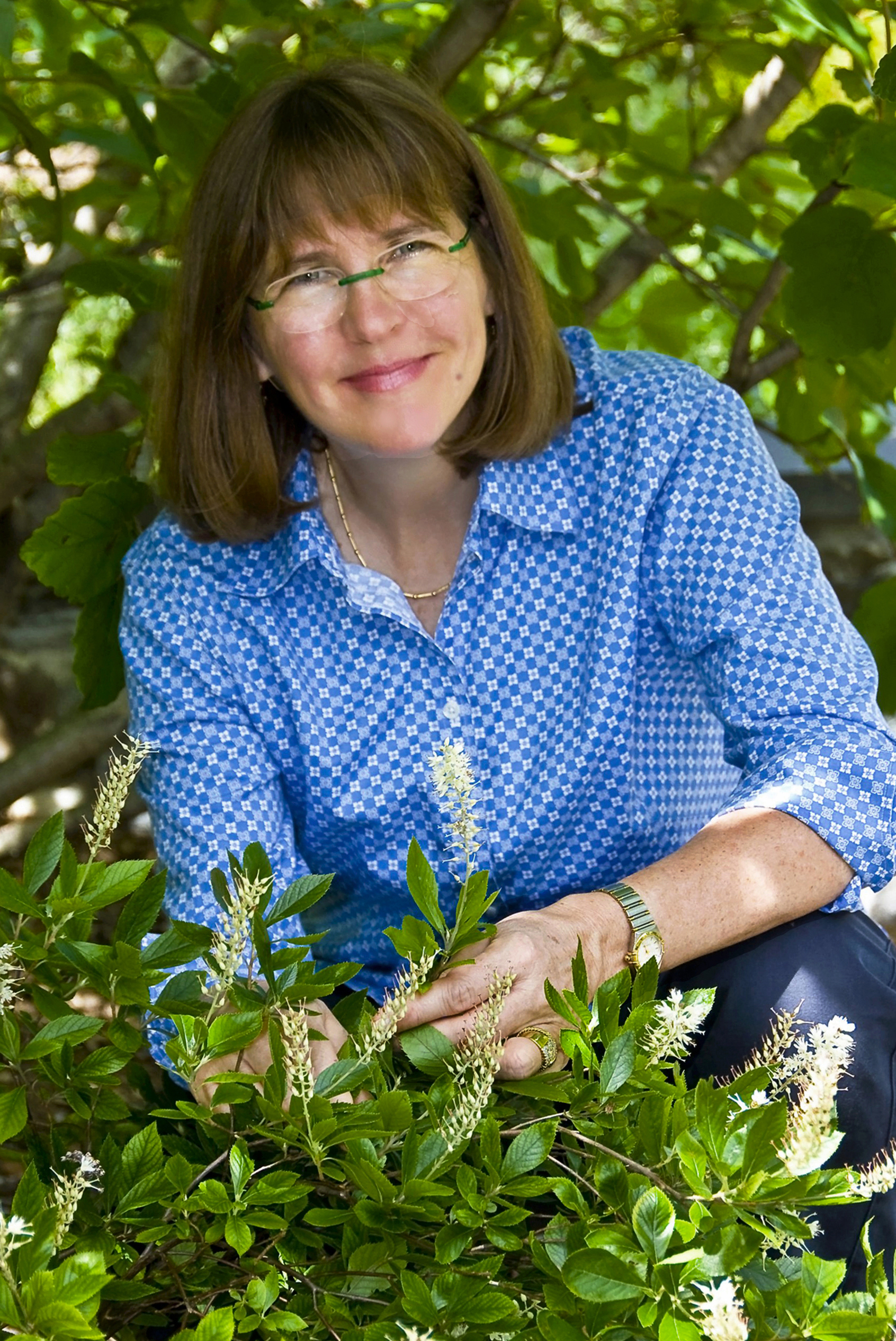
Kim Eierman is the Founder of EcoBeneficial LLC and author, The Pollinator Victory Garden. She is an ecological landscape designer and environmental horticulturist specializing in native plants. Based in New York, Kim teaches at the New York Botanical Garden, the Brooklyn Botanic Garden, The Native Plant Center and the Massachusetts Horticultural Society.
4. Virginia Rose (Rosa virginiana)
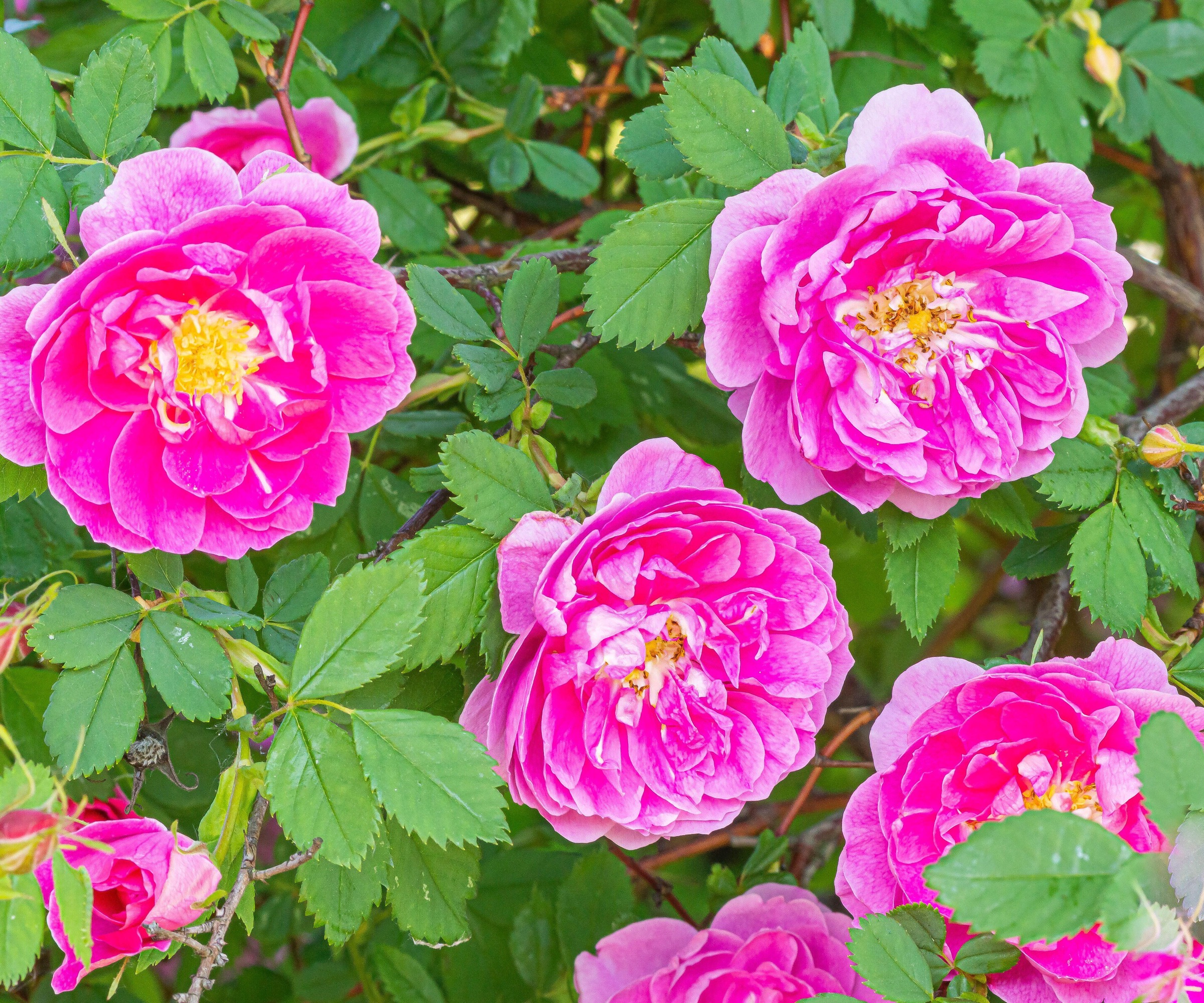
Also known as prairie rose, this woody perennial is a NorthEastern North American native. There are a host of wonderful reasons to plant this spreading rose as a living fence.
Apart from its pretty pink flowers, which bloom from June to August, and rapid growth habit (it can soon reach four to six feet tall), its stems are covered with prickly thorns, so if security is a concern, Virginia Rose is also a great intruder-proof hedge plant. Plant it in sandy or loamy acidic to neutral soil with good drainage for best results.
'Virginia Rose is a tough, disease-resistant, yet underutilized native plant that creates a useful physical barrier as it forms a thicket,' says Kim. 'The flowers are well-loved by long-tongued bees, like bumble bees, as an abundant source of highly nutritious pollen – essential for raising their young.
'A larval host plant for dozens of butterfly and moth species too, Virginia Rose also produces rose hips – bright red fruits that are eaten by birds and mammals – especially in winter. For best flowering, plant Virginia Rose in full sun to part sun in moist to dry soil. This plant quickly grows to 4 to 6 feet wide, and 6 to 8 feet wide, and is very low maintenance.
'If you want to increase biodiversity, companion plants for Rosa virginiana could include Rhus aromatica (Aromatic Sumac) and Symphoricarpos albus (White Snowberry).'
As well as a food source for pollinators, the little red fruits (rose hips), which appear on Virginia Rose at the end of the summer are packed with vitamin C and can be used to make teas and jams too.
USDA hardiness zones: 3-8
5. English laurel (Prunus Laurocerasus)
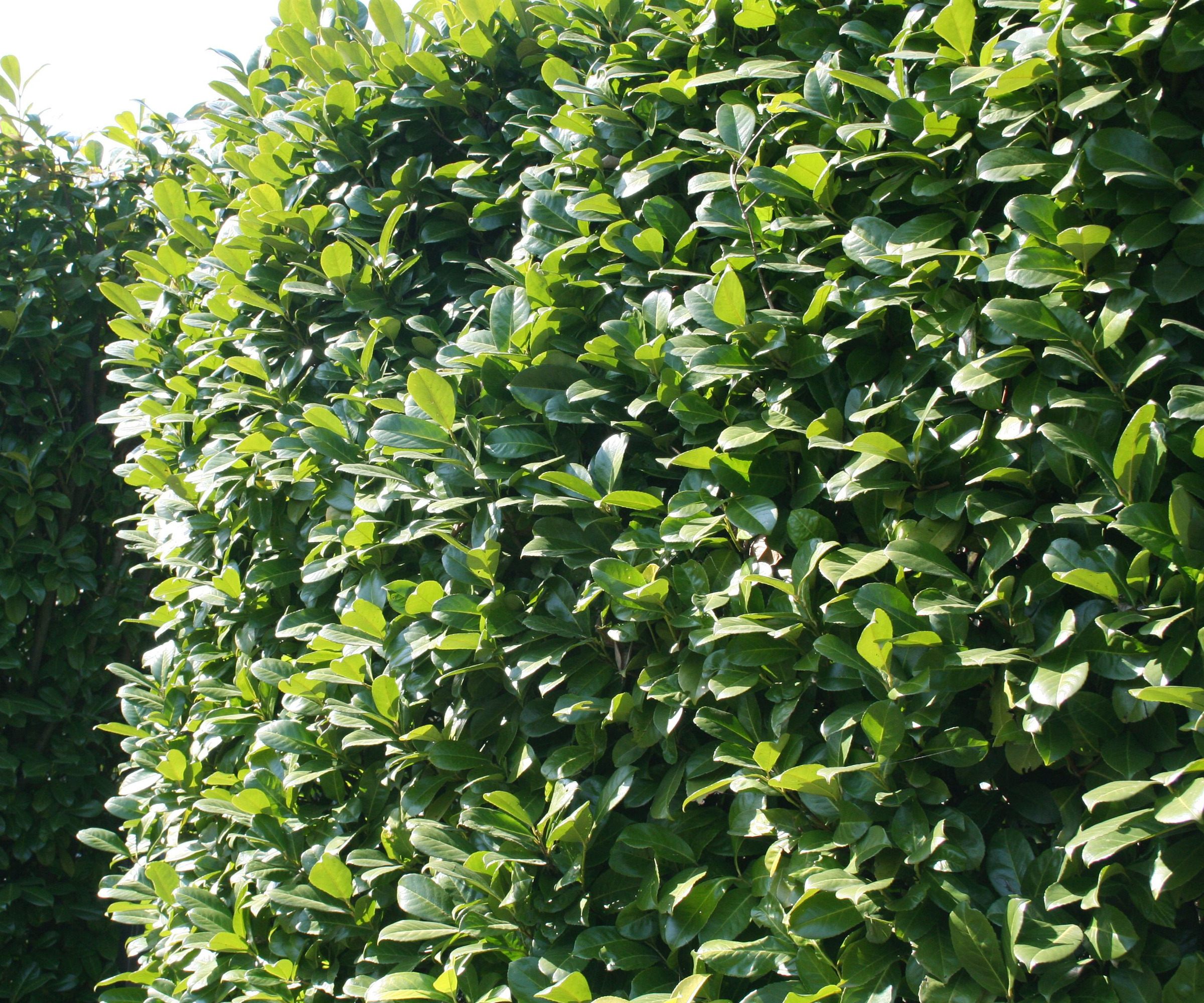
Native to Europe, this fast-growing evergreen shrub is often also referred to as Cherry Laurel. Due to its large glossy dark green leaves and vigorous spreading habit, English laurel is a classic choice for a hedge or living fence.
It also produces tall white, fragrant flower stems, which appear in spring, and berries in the fall. Although, the berries are poisonous to humans and pets, birds love them. English laurel is also a larval host for Tiger Swallowtail butterflies.
They tolerate pruning very well, and respond quickly to fertilizers which will help them to maintain their glossy, dark green appearance.
English Laurels need to be monitored closely for water as they will need to maintain adequate moisture, especially during their establishment in a landscape.
USDA hardiness zones: 5-9
This 'Zimmerman' Cherry Laurel from Nature Hills can be grown in zones 5-9 and requires well-drained soil and full sun to partial shade.
6. Podocarpus (Podocarpus macrophyllus)
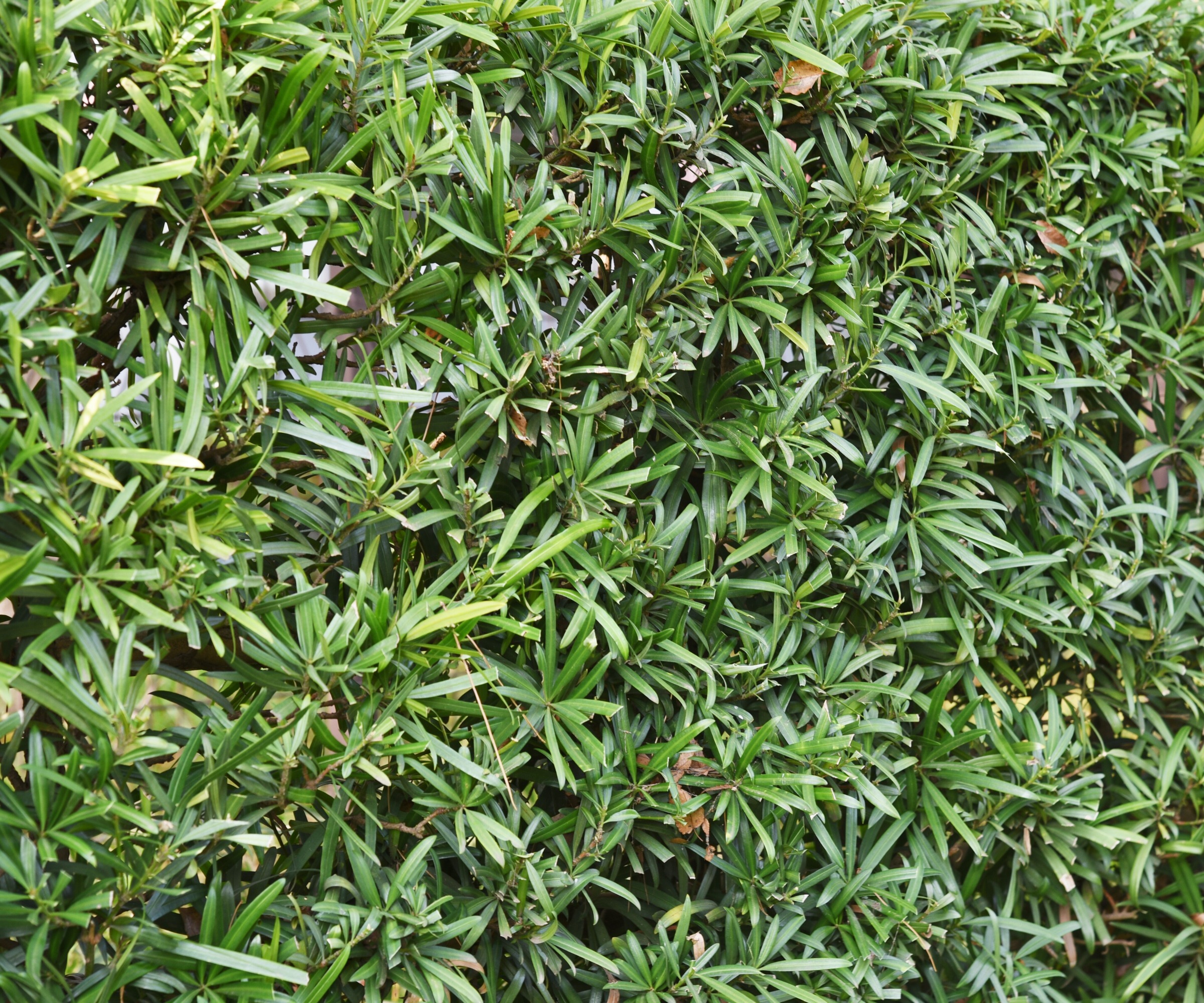
If you would prefer rich green foliage over flowering shrubs or climbing plants for your living fence, Podocarpus could be for you, particularly if you have a large garden. These evergreen conifers originated in southern Japan and southern and eastern China and can be grown as trees or as shrubs for hedges.
Also known as Buddhist pine or Japanese Yew, plant in rich, slightly acidic, well-draining soil with a mix of sun and shade and it will reward you with a lush living fence.
Podocarpus have dense evergreen needles that can be sheared or left to grow naturally as a large evergreen tree. These are best chosen for very large privacy hedges, for example one that is more than 10-15 yards long.
USDA hardiness zones: 7-11
This Podocarpus macrophyllus from Fast-Growing Trees tolerates drought and salt spray, if you're near the coast, and requires minimal pruning. This variety is also hardy down to 10ºF.
7. European Hornbeam (Carpinus betulus)
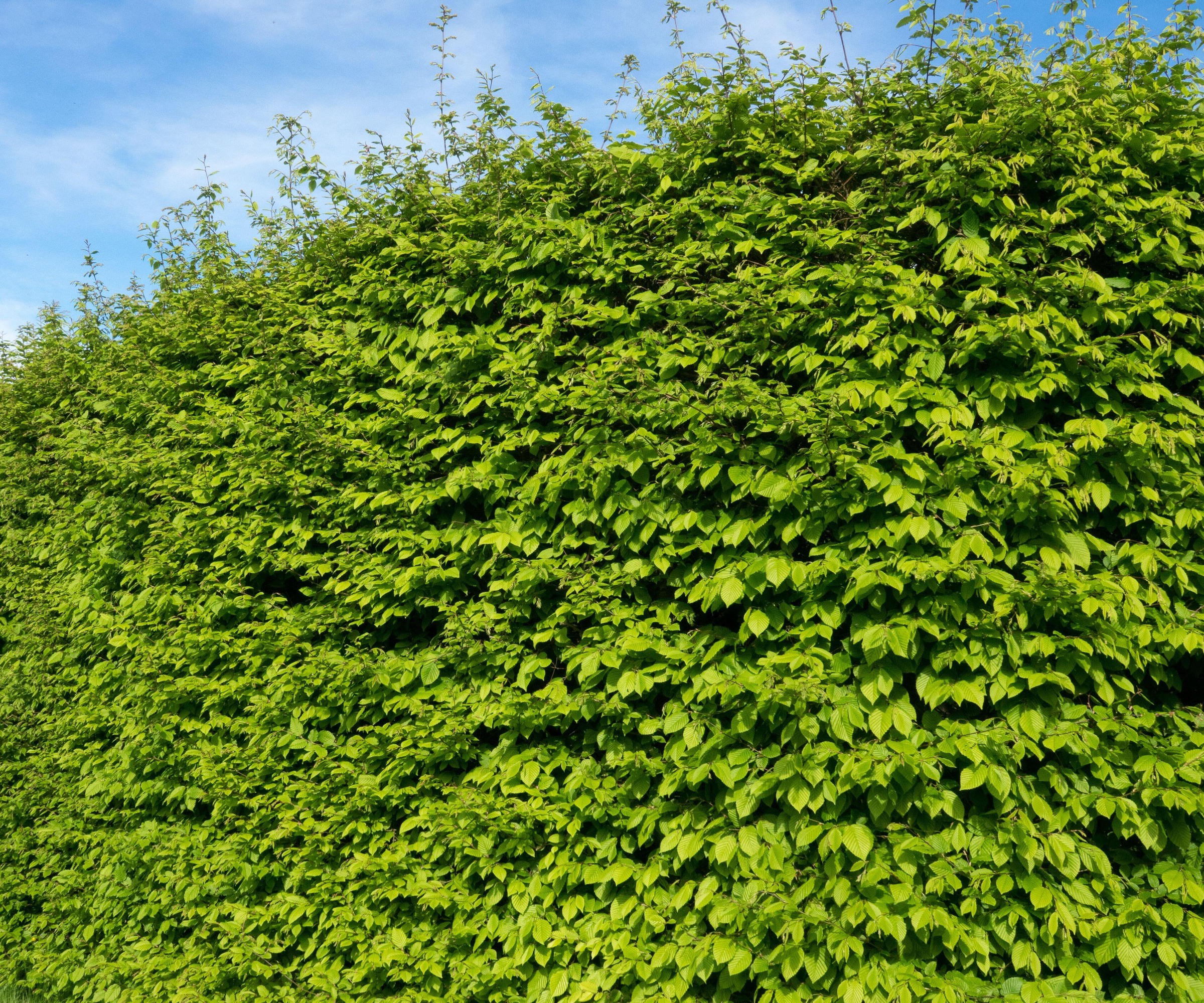
European hornbeam is a popular hedging plant, as although deciduous, it generally keeps its leaves all year round. As well as offering seasonal interest and privacy, with its attractive furrowed foliage, charming catkins in spring and papery seed clusters in the fall, hornbeam also provides shelter, nesting and foraging for birds and food for caterpillars too.
Pruning once or twice a year is usually sufficient, although, be mindful of any nesting wildlife, if you are inclined towards neatly clipped styles.
'European Hornbeams are great specimen trees on their own – their tall, plump shape is often found in traditional English gardens,' says Caitlin Boyle. 'However, Hornbeams are really prized for the neat shapes they create when the trees are massed together.
'Tough, deciduous trees, the dense foliage and branching respond well to pruning making them easy to shape into a formal or informal hedge.
The leaves have great fall color too – turning golden yellow and orange – and are often retained during the winter, adding to their screening ability.
'I like using them for living fences, because they add structure and height to a garden; taller than a classic Boxwood or Yew option with a lot more personality. They grow between 40-60’ high, and 30-40’ wide, but the beauty of them is you can shape them to the size you want. Ensure they have full sun to part-shade.'
USDA hardiness zones: 4-8

A former journalist and social media executive, Caitlin Boyle discovered a love for gardening and creating beautiful outdoor spaces. She subsequently trained at the New York Botanical Garden's School of Professional Horticulture in Landscape Design and founded Dirt Diva Designs, a full-service landscape design firm, in Chatham, NJ.
Whether you err towards an abundant cottage garden, a wilder-style prairie garden, or something more manicured, there is a lush living fence to suit your space.
Consider the zones the various options are suitable for, the amount of maintenance you're able to commit to and the look you would like to achieve, then be bold with your choice and enjoy the numerous benefits a living fence provides.
Jacky Parker is a freelance lifestyle journalist and writer, producing a wide range of features for magazines and websites. She has written for Homes & Gardens and its sister titles, Livingetc and Country Homes & Interiors for more than 15 years, both as a freelance contributor and staff member, regularly reporting on the latest interiors, gardens and lifestyle inspiration, speaking to experts in their respective fields and discovering the newest tips.
You must confirm your public display name before commenting
Please logout and then login again, you will then be prompted to enter your display name.
